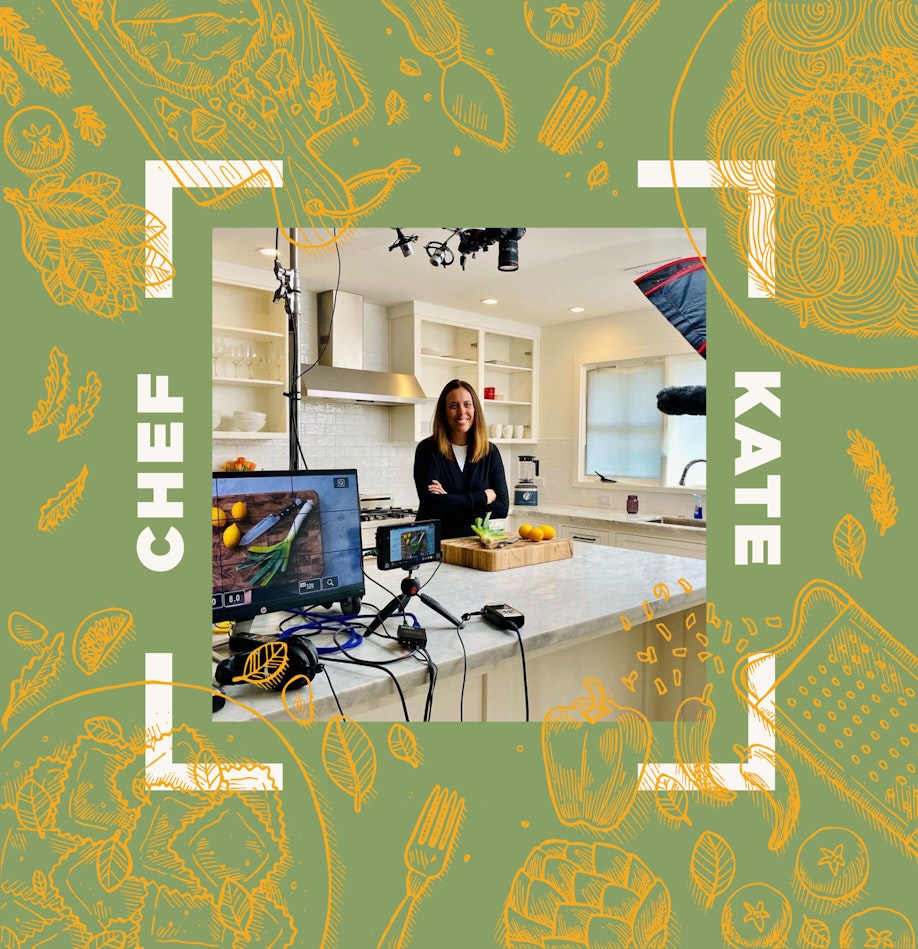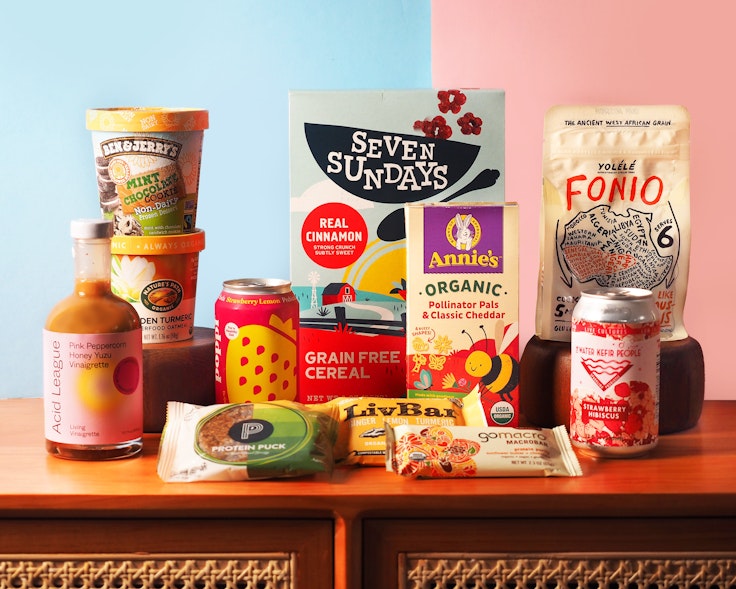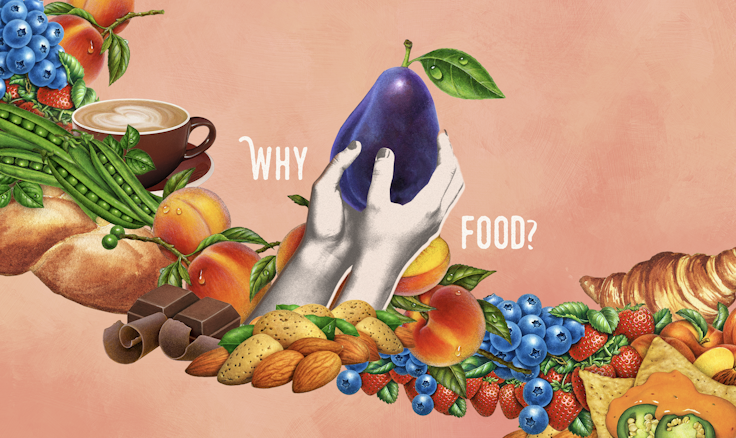A Conversation With Chef Kate McMillan: How to Help Food Brands Succeed
By Sara Behrendt
February 24, 2022
As a food marketing agency, we think a lot about food. We love helping our clients tell their stories, showcase their products and imagine different ways in which their customers can engage with their product. We had the opportunity to sit down with recipe developer, cookbook author and longtime Active Ingredients collaborator Kate McMillan to talk about how she creates recipes that help food brands grab attention and move the needle at shelf.
Kate McMillan is a chef and recipe developer who has authored 16 cookbooks, including Williams-Sonoma’s Soup of the Day, Pizza Night, The Breakfast Bible and Healthy Dish of the Day. Kate’s previous role as an event planner for Vogue and Glamour magazines lends itself to her conviction that when it comes to food, a strong aesthetic is every bit as important as the actual finished dish. When developing recipes, her focus is on using fresh and seasonal ingredients to create dishes that are aspirational, yet simple enough for the home cook to master.
In this conversation, our Creative Director Sara Behrendt invites Kate to share with us how she thinks about a brand when creating recipes, why a recipe must look as good as it tastes and what her opinion is of food trends.
Sara:
We create a lot of recipes for our food clients and we wanted to know — what is the most important thing for you to know about a brand before you start thinking of recipes for them?
Kate:
Without a doubt, the single most important thing for me to know is less about their actual product and more about who their consumer is.
For example, when I was writing books for Williams-Sonoma, their consumer is an experienced home cook, but they are still a home cook. So I have to make sure my recipes have accessible ingredients and things they would know. Things you didn’t actually have to go to culinary school to understand. For instance, I wouldn’t say “chiffonade the basil” in a recipe because they may not know what that means.
So it’s really important for me to know who is buying their product, because if it’s a less experienced cook or if it’s a bunch of kids in their twenties, then I know that this needs to be short list of ingredients, easy to follow steps, no crazy tools or techniques, because that’s not how they’re cooking. As opposed to an older consumer who might be retired and has a little bit more time or wants a little bit more of a challenging recipe.
And as far as the food itself, honestly, I probably already know most of it, because that’s my business. Of course I’m going to want to get that product in my house and actually taste it before I start concepting recipes so that I can figure out things like — okay, this is a tomato sauce but it’s actually really sweet. But, I need to figure that part out on my own.
So from the company, what I really need to know is who their consumer is.
Sara:
So after you develop a recipe, eventually a consumer is going to interact with that recipe. And the main way consumers interact with recipes is visually. How it looks is the first thing that makes them say — “I want to eat that”. So, the way it’s plated and the photo or video of it has to be impressive to get them interested. How much do you think about the end “look” when developing a recipe?
Kate McMillan:
A ton, because for the most part, everything I’m doing is being photographed.
I want to make a recipe that makes people say, oh my God, I have to make that. And now I want to have that product. And, no big surprise, it starts with the photo. Does it look good? Does it make me actually start to salivate and think oh my God, I want to make that. And my family would love that. I’ve got to make that.
Even when I wrote cookbooks, most of what I was doing was photographed. After I submitted my final recipes, my next job with my editor was to go through the table of contents and add notes for the stylist and the photographer — definitely photograph this, photograph that. And there would inevitably be a few that you don’t want to photograph at all. It’s delicious, but it’s just not pretty.
But, when I work with food brands, it’s always being shot. So it’s a huge consideration. I am always thinking about it. And when you work with a good food stylist, they will come up with a way to make it beautiful. Even if it’s something like a chicken pot pie where on the outside it doesn’t look amazing, but a food stylist will know how to open that pot pie up exactly right to see the creamy insides and the flaky outsides — they know how to shoot it so that you’re getting both.
Sara:
Right, some foods just don’t shoot well. But are there any tricks you use to get foods that aren’t inherently mouthwatering to look great?
Kate:
I think food always looks beautiful any time you can add fresh garlic or fresh herbs. Color is also really important. You always want to think about colors.
And then it just comes down to the styling. For example, a stack of pancakes by itself isn’t particularly beautiful. It’s just not. But when you get a good food stylist and a photographer together who know exactly how to style that pat of butter so it’s just starting to melt and the syrup is pouring onto it and it’s coming over the side — that’s where the magic happens.
I feel like most foods you can make look really, really pretty. And the food stylist and the photographer are so important in the mix and worth every dime.
“Food is actually incredibly cyclical. It goes out of style fast.”
Sara:
Something we think about a lot is flavor and recipe trends. Since our recipes live on the web, it’s important for us to think about what people are searching for so we can be that resource for them and also capitalize on SEO both on their website but also on sites like Pinterest.
But what are your thoughts on using classic recipes and flavors vs trending recipes and ingredients? Do you think it’s important or helpful for brands to follow trends?
Kate:
It’s interesting because food is actually incredibly cyclical. It goes out of style fast. I look at books that I wrote five years ago and I cringe at some of the pictures in there. I think — oh no! No one’s eating that anymore! It really does come and go quickly. And because foods fall out of style so quickly, I think for longevity it’s always a better plan to have a mix of those two things — to have some trendy recipes and some classic recipes.
For classic recipes, something like a great chicken noodle soup with big noodles and delicious, fresh looking herbs is always going to perform well. And maybe the twist is that it’s dill instead of thyme. There are certain foods like a banana bread, a meatloaf, a baked pasta dish — those kinds of recipes are always going to last longer.
But, I do think it’s super fun to make trendy recipes. There are certainly tons of TikTok recipes that everyone goes crazy over. I think those recipes have their place and I would not shy away from doing them because I think it’s great for eyeballs on your product. People just think they’re fun. For instance, my kids — who are 19 — they do all those videos! The tortilla folding thing. They did the one where you make sushi rice, and then you fry it and put tartare on top. My kids are so into all of them.
So my advice is that a little bit of trendy is great because you want to be up on the times and you want to be reaching a mass audience. But you also always need to have those classics that are going to stand the test of time.
And you know, things happen! A pandemic happens and people go right back to wanting what they know and wanting those things that remind them of their childhood and give them comfort.
Sara:
So true. Since the pandemic began, those classic tried and true comfort foods are so needed.
But at the same time, I love that you brought up trending foods on TikTok or Instagram Reels because food is so much more a part of youth culture these days. When I was growing up we weren’t surrounded by food in the same way as the most recent generation. Cooking shows were just starting to come into existence and they were still actually about… learning how to cook!
Kate:
Yes, I think it’s that. I think TikTok has done a great job of making it entertaining. My kids — even still at 19 — are probably not grabbing a cookbook. But when they’re flipping through TikTok and when they see that someone they follow has made this trending recipe, they enjoy it! And it’s entertainment for them. They were entertained for 30 seconds while they watched it.
Sara:
In other words, it’s more about the relationship they have to the content creator than the recipe itself.
Kate:
Exactly. The one place where I would caution brands is that often those trending TikTok type recipes are not actually great recipes. They are more often great ideas and there’s nothing wrong with that! I actually don’t care that it wasn’t an amazing recipe. For me, anything that gets our kids into the kitchen, learning how to cook and expressing themselves is awesome. But they’re not usually written by recipe developers.
“Video is super important. And I think it’s becoming more important because we’re just such a visual society.”
Sara:
Absolutely. Those trending recipes might be good to have as a way to get people interested and more aware of the brand. But then eventually you want to try to hook them with the tried and true classic recipes that have more lasting value and quality to them.
Let’s move on to a different but related topic. How important is video when telling a recipe story? And how do you think through video for your food clients.
Kate:
I think video is super important. And I think it’s becoming more important because we’re just such a visual society. People really respond to just seeing how it’s done. I think the best videos are short and sweet and make you think — wow! That looks so good, I can totally do that.
My production team and I spend a lot of time working through how a given recipe is going to play out in video. We spend a lot of time talking about what’s going to look good, but also about what are the important educational parts of the recipe. Because when I say in the recipe “Crimp the edges and do an egg wash,” I just want them to see what that looks like. So we have a lot of give and take. They want this, I want this. Oftentimes what we end up doing is shooting what everybody wants. And then it’s production’s job to cut it down.
Sara:
Yeah, that makes sense. I think these short social videos have really progressed over the years. You used to always see that “Tasty style” video where you saw every single ingredient and step and it took quite a while. But now it’s changed and videos start out with that perfect money shot for the first few seconds as the hook. And then you show the key steps and the narrative arc of the recipe. And of course you take into account the key educational steps you want to show.
But these short videos are more about breaking a recipe down beyond the written steps. It’s about letting the viewer know that even if there are 7 or 8 steps, there are really just three sections to this recipe. It’s the prepping here and then the mixing and the baking and that’s it!
Kate:
It’s funny you say that because when I write recipes for my personal Instagram, I always break it up into three sections. These are the ingredients. Here’s how to make the recipe. And then there’s the extra information, like, if you didn’t know what AP means, it’s all purpose flour. If you don’t have strawberries, you can substitute these other fruits.
But I agree, there’s something to be said for showing just how simple a recipe is by way of a video. It’s just flour, sugar, baking soda — mix it, put it in the bowl, bake it. Voila! And it gives them this moment of — oh I can totally do that — because you can see the steps and you know — oh that’s only going to take me 10 minutes. I think it’s so important to break it up for people and help them feel that they can totally do this.
Sara:
Yes. It’s about confidence building.
Well, we have one final question for you which is — why food? Why do you work in food? Why do you love food? Why do you think food is so important?
Kate:
I just think food is so uniting. And I think it’s so comforting. And I really truly grew up in a family that cooked every meal. We never bought anything packaged. My oldest sister went to college and was surprised enough to find pasta in the local store that she actually called my parents to tell them. I just didn’t grow up in a family where we bought processed anything. Every Sunday we went to church, we went to the farmer’s market, and then we would cook all day. And we would have these huge Italian dinners at four o’clock. It was mandatory to be there. We had breakfast as a family before we all went to school. We had dinner every single night. And I think it’s just an incredibly uniting, comforting, beautiful together moment.
I think food just brings people together. And it’s fascinating to learn about other people’s food culture — how they eat, why they eat, why they use their hands or different utensils, the different ingredients that they use. And I also think food is something to be really grateful for. It’s a luxury and it fuels your body. And it is nourishing in an emotional way, but also in a very physical way. You need food! I think it’s crazy that so many of our kids don’t know how to cook because you have to eat to live!
Sara:
I love your story about your family because I’ve always felt that people don’t make a meal for themselves, they make it for other people. There’s just this emotional connection that comes with food.
Kate:
I agree with you. It brings me so much joy to have people over to feed them. It really brings me so much more joy to feed other people. Much more than the joy I get from eating food myself. I like food, obviously. It’s what I do for a living, but I just get so much more out of feeding people. I love it. I love having everybody sit around over a warm bowl of something and to hear them saying, oh my God, this is so good. It’s just such a lovely way to bring people together.
This article was written based on an interview we did with Kate. Questions and answers have been edited for clarity and ease of reading.



